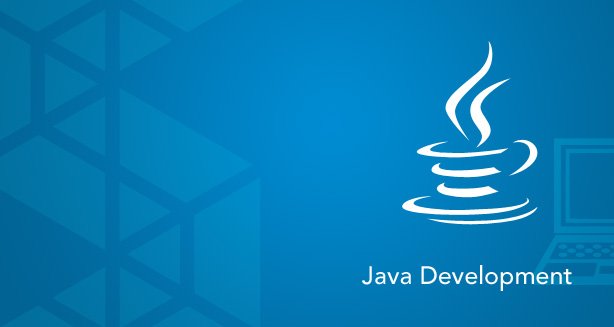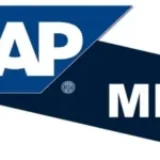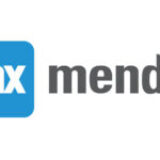Java
The Java online course is designed to ensure that you learn & master the concepts of Coding field and pass the certification exam on your first try. The practical hands-on learning approach followed in the course will ensure you get job-ready by the end of it.
About Course
We at Golive classes provide world-class Java course Online Training.
Java Online Course Syllabus will help you Become a Good Java developer and get certified from this Master Java Program. Hands-on Industry Projects on Various Domains to understand the Basic & Advanced level of Java Programing Techniques. Enroll for Java Online Training with us and Start your Career in the Software Industry.
This Java Online course is designed to teach you the Basis and Advanced level of Java Usage in Selenium Testing, Data Science Algorithms, Desktop, and Mobile Application Development with Sample Projects to understand better
What is this course about?
Java is one of the most commonly used programming languages for developing applications. Golive Java Online Training is curated by professionals as per the requirements and expectations of the industries and also Placement Assistance is provided for those who get certified at the end of the course. Comprehensive knowledge of basic and advanced concepts of core Java & J2EE are encompassed in this online training making you familiar with real-time projects.
In this course, you will gain expertise in concepts like Java Array, OOPs concepts, Java Loops, Functions, Java Collections, Java Thread, Web Services and Java Servlet using real-time industry cases. This course assumes that you have zero programming knowledge. So, the students without a prior programming background can also successfully complete the training. But having some experience will definitely be a bonus point. At the end of the training, you will be in a position to develop your own applications.
What are the training objectives?
- Upon the course completion, the students can Understand basic Core Java 8 concepts,
- Implement string handling, exceptional handling, and multi-threading techniques
- Establish connections using JDBC for communicating with a database
- Create a JSP using directives and run an application
- Learn to understand servlet fundamentals like HTTP Protocol, HTML, J2EE in detail
- Deep dive into SOA architecture
- Learn Hibernate Query Language (HQL) and its exciting features
- Map relationships with Hibernate
- Configuring AOP in Java applications
- Design a SOAP-based web service
Why should you learn the Java and Core Java course?
Advanced Java is the on-demand technology with numerous job opportunities for Certified Advanced Java professionals across the Globe. Many MNCs are recruiting Advanced Java practitioners across the world.
The average salary of an “Advanced Java” professional ranges from $47,169 to $106,610 per year.
Who should learn in this Java and Core Java training?
Software developers, Professionals/Students who wish to become Java developers, Programming enthusiasts, Web designers, and engineering graduates
What are the prerequisites to learn this course?
There are no pre-requisites for this course, anyone who is having enthusiasm about learning this course can attend this training?
Why GoliveClasess?
1.We provide training along with Real-time concepts with case studies
2.Project Explanation
3.Interview Questions
4.Resume preparation
5.Technical Assistance even after Course Completion
6.Career Guidance
7.life time video recordings Acess
8.The assistance provides in consulting and placement
9.Free other courses will be provided free of cost.
Course Circular
Core Java Syllabus:
1. Core Java Programming Introduction of Java
Introduction to Java; features of Java
Comparison with C and C++
Download and install JDK/JRE (Environment variables set up)
The JDK Directory Structure
First Java Program through command prompt
First Java Program through Eclipse
2. Data types and Operators
Primitive Data types, Declarations, Ranges
Variable Names Conventions
Numeric Literals, Character Literals
String Literals
Arrays (One dimensional; two- dimensional)
An array of Object References
Accessing arrays, manipulating arrays
Enumerated Data Types
Non-Primitive Data types
Defining a class, variable, and method in Java
Method Signature; method calls
Expressions in Java; introduction to various operators
Assignment Operator
Arithmetic Operators
Relational Operators
Logical Operators
Conditional Operators
Operator Precedence
Implicit Type Conversions
Upcasting and downcasting
Strict typing
Type conversion
3. Control Flow statements
Statements and it’s various categories in Java
if, if-else, if-else-if
Switch case
For statement (both flavors traditional and enhanced for)
While and do-while loops
The continue Statement; labeled continue statement
The break Statement; labeled break statement
Return statement
4. OOPS and its application in Java
Classes and Objects
Defining a class; Defining instance variables and methods
Creating objects out of a class
Method calls via object references
Abstraction
Interfaces and Abstract classes
Abstract and non-abstract methods
Inheritance
extends and implements keywords in Java
Superclass and Subclass
this keyword, super keyword in Java for inheritance
Concrete classes in Java
Polymorphism
Compile-time polymorphism — Overloading of methods
Run time polymorphism — Overriding of methods
Method Overriding rules and method overloading rules
Introduction to Object class and it’s methods
Encapsulation
Protection of data
Java Bean, POJO
Getters/Setters
Memory management in Java
Heap
Stack
5. Packages
Need for packages
What are packages; package declaration in Java
Import statement in Java
How do packages resolve name clashes?
6. Miscellaneous
Var-Args
Reference variables, local variables, instance variables
Memory allocations to variables
Double equals operator(==) operator for primitives and objects
toString () method on an object
7. Statics
Static variables and methods
Static imports
Static initialization blocks; instance initialization blocks
The static concept in inheritance
8. Constructors
What are Constructors?
Properties of Constructors
Default and Parameterized Constructors
Rules for constructor implementation
Constructor Chaining
This call; super call for constructors
Constructors for Enumerated Data Types
Constructor’s concept for Abstract classes and interfaces
9. Exceptions in Java
What are Exceptions?
Need for exceptions
How can Exceptions be coded in Java?
API hierarchy for Exceptions
Types of Exceptions
Keywords in Exception API: try, catch, finally, throw, throws
Rules for coding Exceptions
Declaring Exceptions
Defining and Throwing Exceptions
Errors and Runtime Exceptions
Custom Exception
Assertions
What are Assertions?
Enabling and disabling assertions in the development environment
10. Strings in Java
What are the Strings?
String heap memory and Constant Pool memory
Immutability in Strings
String creation on the heap and constant pool
Method APIs on String; operations on Strings
Mutability of String Objects – StringBuilder and StringBuffer
Splitting of Strings and StringTokenizer class
11. Collection Framework in Java
The Collections Framework
The Set Interface
Set Implementation Classes
The List Interface
List Implementation Classes
The Map Interface
Map Implementation Classes
Queue Interface
Queue Implementation classes
Utility classes
Sorting collections using utility methods
Equals() and ash Code contract in Java collections
Overriding equals and ash Code methods in Java
New Collections added in Java 1.6
Primitive wrapper classes and all its method APIs
12. Generics
Generics for Collections
Generics for class
Generics for methods
13. Input-Output in Java
What is a stream?
Overview of Streams
Bytes vs. Characters
Overview of the entire Java IO API
Reading a file; writing to a file using various APIs
Reading User input from console
Print Writer Class
14. Serialization
Object Serialization
Serializable Interface
Serialization API
Object Input Stream and Object Output
Transient Fields
Read Object and Write Object
15. Inner Classes
Inner Classes
Member Classes
Local Classes
Anonymous Classes
Static Nested Classes
16. Threads in Java
Non-Threaded Applications
Threaded Applications
Process-based multitasking Vs Thread based multitasking
Thread API in Java
Creating Threads
States of a Thread
Synchronization for threads; static and non-static synchronized methods; blocks; the concept of object and class locks
Coordination between threads – wait, notify and notify all methods for inter-thread communication
17. Applets
What are applets?
Need for Applets
Different ways of running an applet program
Applet API hierarchy
Life Cycle of an applet
Even Handlers for applets, mouse events, click events
18. Swing GUI
Introduction to AWT
Introduction to Swing GUI
Advantages of Swing over AWT
Swing API
Swing GUI Components
Event Handlers for Swing
Sample Calculator application using Swing GUI and Swing Event handling
19. JDBC
What is JDBC; introduction
JDBC features
JDBC Drivers
Setting up a database and creating a schema
Writing JDBC code to connect to DB
CRUD Operations with JDBC
Statement types in JDBC
Types of Row Set, ResultSet in JDBC
20. Access Modifiers in Java
What are the access modifiers?
Default
Protected
Private
Public
21. Debugging of Java Programs in Eclipse.
Core Java Syllabus:
Servlets and JSPs
1. Basics of a Web application
What is a web application?
What are web client and web servers?
How do the client and server communicate?
HTTP protocol basics
HTML language basics
What is a TCP/IP port, URL?
2. Web Container and Web Application Project Set up
To set up Tomcat Container on a machine
To set up a Servlets JSP project in Eclipse
To configure dependency of Servlet JSP APIs
Web application project structure
3. Servlets
What are Servlets?
What can they do? Why are they needed?
How do Servlets look in code?
HTTP Methods; GET, POST, PUT, DELETE, TRACE, OPTIONS
GET/POST request; differences between the two
Servlet Lifecycle
Servlet Context and Servlet Config
Forwarding and Redirection of requests
4. Session Management
What is a session?
Why is it required?
How to get a session?
Session information passing between client and server
Session information passing mechanisms – Cookies, Rewriting
How to Destroy a session
5. JSPs
Introduction to JSP and need for JSPs
Basic HTML tags
JSP Lifecycle
6. JSP Elements
Scriptlets
Expressions
Declarations
Significance of the above elements and fitment into the JSP Lifecycle
What are Directives in JSP?
Page Directive
Include Directive
Taglib Directive
7. JSP Tag library
JSP Standard Actions
Expression Language
JSTL basics and its usage
Need for Custom Tag Library
Custom Tag Library implementation trusts Framework
Struts Framework
1. Basics of MVC
What is MVC?
MVC Type1 and Type2 architecture
Why the struts framework?
Struts 1 overview
Struts 1 and Struts 2 comparison
2. Struts 2 Architecture
Architecture Diagram explanation of the following components:
Components of Model, Views, and Controller in Struts Framework
Interceptors
Model/Action classes
Value Stack
OGNL
Introduction to configurations; framework and application architecture
Declarative and Annotations configuration approaches
3. Struts 2 set up and first Action class
Download JAR files
Struts 2 project build up and Configuration files
To build the Action class
To intercept an HTTP request via the Struts2 framework using Action class
Defining data and business logic in Action class
Preparing and Forwarding control to Views
4. Struts 2 Interceptors
What are Interceptors
Responsibilities of an Interceptor
Mechanism of Interceptor calling in Struts 2
Defining Interceptors
Defining Interceptor stacks
Defining Custom Interceptors
5. Struts 2 Tag Library
Introduction to tagging library of Struts 2 and it’s the usage
6. Struts 2 Validations
Validations using Validatable interface
Workflow interceptor mechanism for validations
Validations using Validatable interface
Validation Framework introduction and architecture
Validating user input with the above two mechanisms
7. Struts 2 Tiles Frameworks
Introduction to Tiles in a page
Struts2 Tiles framework introduction
Defining tiles.xml file
Configuring pages for tiles
A complete Tiles example with Struts2
Hibernate Framework
1. Introduction
What is ORM principle?
Why ORM?
ORM implementations
2. Hibernate Architecture
Introduction to Hibernate
Hibernate Architecture
What are Persistent classes?
3. Hibernate CRUD
Setting up a Hibernate project
Configuring all JARs and XML files
Setting up a connection to DB using Hibernate
Performing basic CRUD operations using Hibernate API
Object Identity; Generator type classes
Using SQL with Hibernate
Using HQL
Using Criteria queries
4. Mapping Collections and Associations
To define sets, mas, lists in Hibernate
Association Mappings:
One to one
One to many
Many to one
Many to many
5. Hibernate Caching
What is caching?
What are the types of caching in Hibernate?
Explanation of various caching mechanisms in Hibernate
6. Using Hibernate Annotations (if time permits)
Sample example of using Hibernate Annotations
Spring Framework
1. Introduction to spring
What is spring?
Spring Architecture explanation and all it’s components
2. Introduction to all modules of spring
Spring Bean Factory
Spring Application Context
Spring DI
Spring AOP
Spring Integration; spring messaging, Spring JMS
Spring MVC
Spring DAO
3. Setting up spring
Setting up of spring framework
Download JARs
Configure XML files
4. Dependency Injection
What is Dependency Injection?
How is it implemented using Spring Framework?
Bean Wiring mechanisms in Spring
5. Spring AOP
What is Spring AOP?
Implementation of Spring AOP











